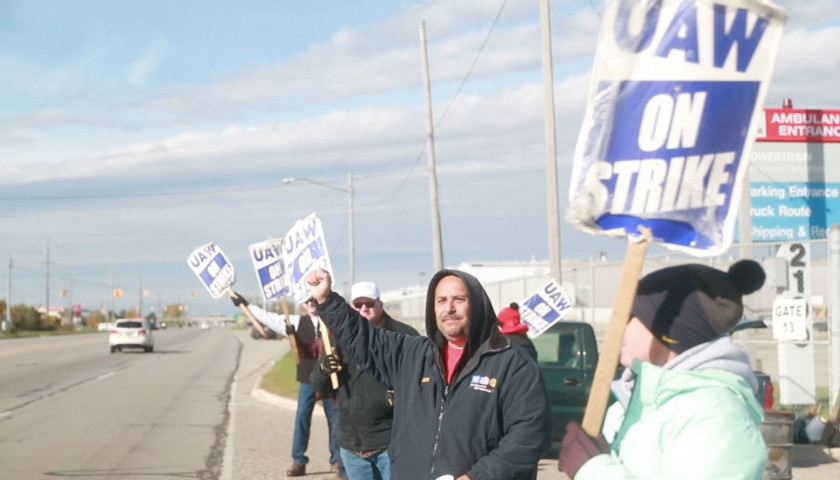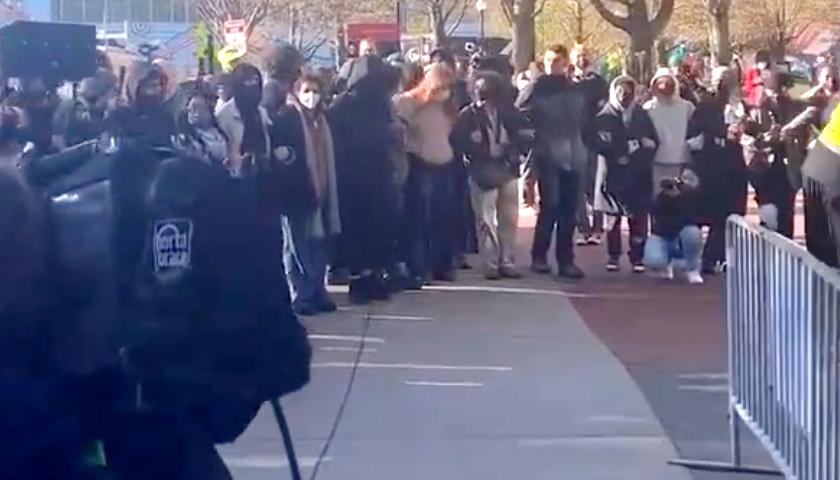by Terry Bowman
Everyone wishes for a speedy resolution to the ongoing labor dispute at General Motors that results in a fair and equitable deal for the workers now on strike.
The strike illustrates one eternal truth for the American worker: what matters most is bargaining power. When you have it, you can demand better pay and benefits. And when you can’t get a good deal, you can resort to the greatest of all negotiation tactics, simply walking away.
President Trump built his career around his reputation as a tough negotiator, and he based his entire 2016 campaign on the promise that he would secure a better deal for American workers. As President, he has fulfilled that promise by delivering economic policies that have improved the bargaining power of workers tremendously.
The best place you can be in any negotiation is to be in a position to walk away. That’s the real significance of the jobs boom that America is enjoying under President Trump, which has pushed the unemployment rate to its lowest level in half a century. That certainly means a lot for the millions of workers who have found jobs since Trump took office, but it also means a lot to the other workers throughout the country who have seen their own situations improve because of the intense competition for employees in the job-rich Trump economy.
It means that if an employee isn’t given what he or she wants — the pay, the benefits, the quality of life, the opportunities — they’re more likely to be able to hit the road and find another employer willing to pay a premium for skilled workers. Here in Michigan, where the unemployment rate sits at 4.3 percent and wages are growing rapidly, workers have more power to walk away, and look for better opportunities elsewhere, than they have in a generation.
Everything Donald Trump does in the White House — whether it’s getting tough with China on trade, cutting taxes on middle-class Americans, or eliminating needless regulations that hamper job creation — is designed to help working men and women.
Part of that equation is supply and demand, which is why President Trump has been so determined to secure the border, strictly enforce our nation’s immigration laws, and choke off the supply of cheap, illegal labor that has been undercutting wages and taking jobs from American workers for decades.
For years, liberals defended corporations that were eager to pay American workers less. In reality, though, there are no “jobs Americans won’t do.” There’s only bargaining power.
The more workers there are competing for a given number of jobs, the less bargaining power each worker has to negotiate. That’s why President Trump is willing to endure any number of political slings and arrows in order to ensure that our immigration laws are enforced, and that American workers are protected.
Organizing is an effective and time-honored method of improving workers’ bargaining power. The UAW members at GM are exercising their right to do so. There are also other ways to improve the bargaining power of American workers everywhere. The most important of them is keeping a genuine advocate in the White House for another four years. We do that by reelecting Donald J. Trump as President.
Workers for Trump is going to be one of the most dynamic and important coalitions of the Trump Campaign in 2020, especially here in the upper Midwest.
So ask yourself, “Do you have more or less bargaining power than you did three years ago?” If the answer is “yes,” as it is for the overwhelming majority of workers in this economy, then it’s time to consider getting involved with Workers for Trump so you can stand with your colleagues in defense of your own prosperity.
– – –
Terry Bowman is Co-chair of the Michigan Republican Party, a Ford Hourly autoworker, and Former Co-chair of Donald Trump for Michigan. In 2010 Terry started a grassroots effort to grant union workers around the country additional rights, freedoms, and protections. His efforts led him to play a central role in the passage of Michigan’s 2012 Right to Work law.
Photo “UAW Workers on Strike” by UAW.





